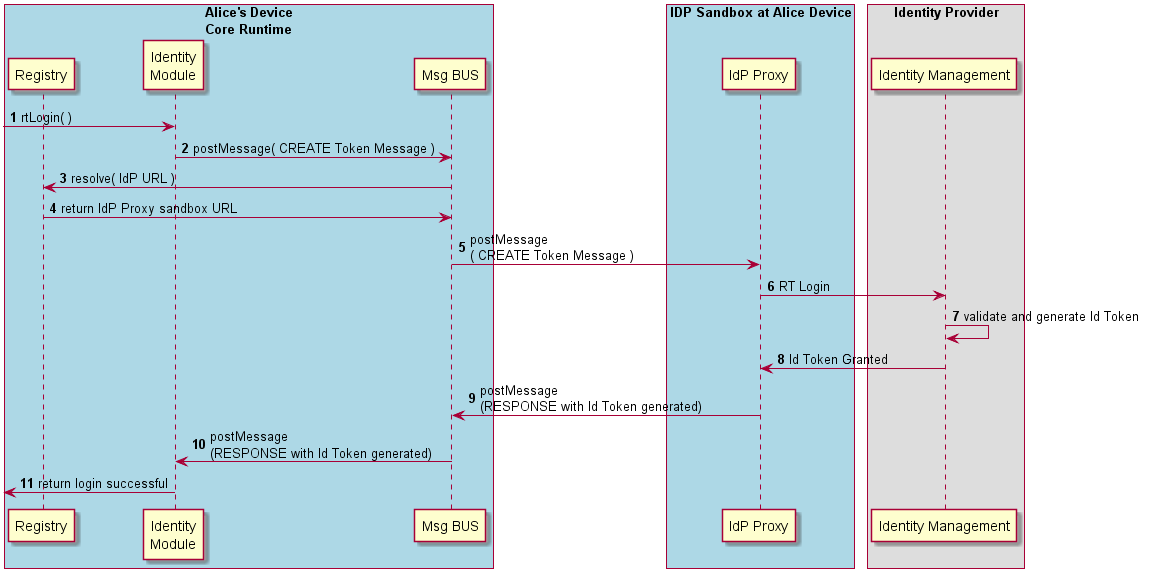Getting Started
- Quickstart
- How to use Hyperties in Applications
- How to develop new Hyperties
- How to develop new Protostubs
- How to develop new Idp Proxies
- Interworking Protostubs for Chat
- Interworking Protostubs for WebRTC
- How to develop Message Nodes
- reTHINK Core Framework implementation
Concepts
- Conceptual Foundations
- Hyper-linked Entities - Hyperties
- Decentralized Messaging
- Protocol on-the-fly
- P2P Data Synchronization
- Decentralized Trust
- Reference Architecture
- Communication Control Main Workflows
APIs
Messaging Framework
- Messaging Framework Overview
- Messaging Node
- Protostub specification
- P2P Message Delivery
- Message Node and Protostubs design recommendations
Runtime
Trust Management
How it Works - Basics
- Overview on reTHINK Basic Mechanisms
- Runtime Deployment
- Hyperty Deployment
- Protocol Stub Deployment
- Address Allocation
- Hyperty Registration
- Message Routing
- Routing Address Resolve for Msg Node Stubs
- Routing Address Resolve
- Intra-runtime Msg Delivery
- Inter-runtime Msg delivery
- Cross Domain Msg delivery
- P2P Msg delivery
How it Works - Data Synchronization
- P2P Data Sync Overview
- Data Object Creation
- Data Object Subscription
- Data Object Unsubscription
- Data Object Delete
- Data Object Child
- Data Sync Resume for Observers
- Data Sync Resume for Reporters
- Observer unsubscribed by Reporter
- Data Object Reporter Delegation
How it Works - Discovery
How it Works - Identity Management
- Identity Management Overview
- Identity Binding
- Id Token generation
- User identity assertion
- Domain Login
How it Works - Legacy Interworking
Testing
- Tests and Evaluation Overview
- Interoperability Evaluation
- Identity Management Evaluation
- Message Node Evaluation
Core Datamodel
Data Object Models
- Communication Data Object
- Connection Data Object
- Context Data Object
- Databackup Data Object
- Wallet Data Object
- E-commerce Data Object
- Spot Data Object
- Device Data Object
- Elearning Data Object
Messages Specification
- Messages Specification Overview
- Data Object Synchronization
- Address Allocation
- Registration
- Wallet management
- Discovery
- Identity Management
- P2P Connections Management
Backend Deployment
Standards
Use-Cases
- reTHINK Use Cases Overview
- H2H Conversation with single CSP
- H2H inter-domain Manageable Conversation
- H2H Conversation with decoupled CSP and IdP
- Always Connected with the Trusful Ones
- Dynamic Media Server or Media Gateway provisioning
- Trust
- H2H Conversation with QoS
- H2H Partial Anonymous Conversation
- H2H Multiparty Conversations
- H2H Conversation Browsing
- User Authentication and Registration
- Service Subscription
- M2M Seamless connected from different but Trustful domains
- Validation of trust
- M2M Always Connected in Trustful Domains for Multi vendor devices
- Human Context Presence Management
- Service Recommendation by Business Broker
Id Token generation
This section describes the main procedures to generate an Id Token by performing a Relying Party Login. Messages are specified [here]((../../specs/messages/identity-management-messages.md#relying-party-login)
